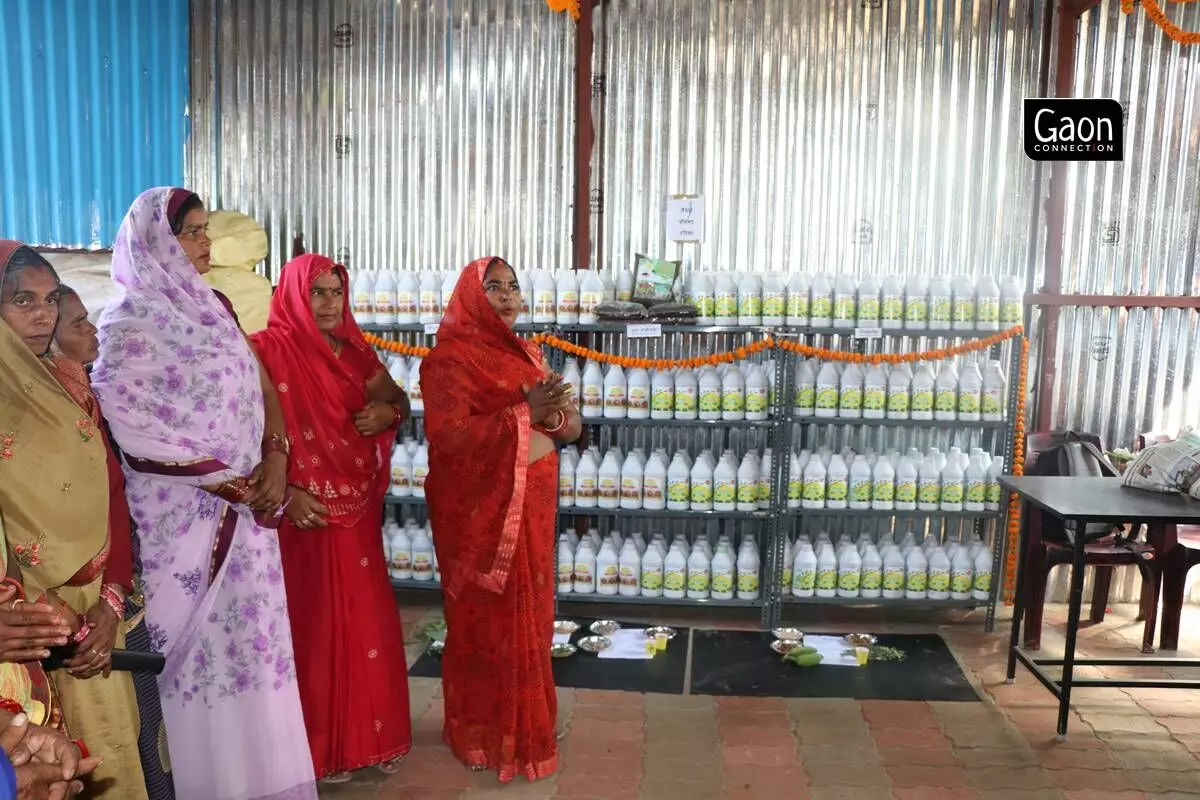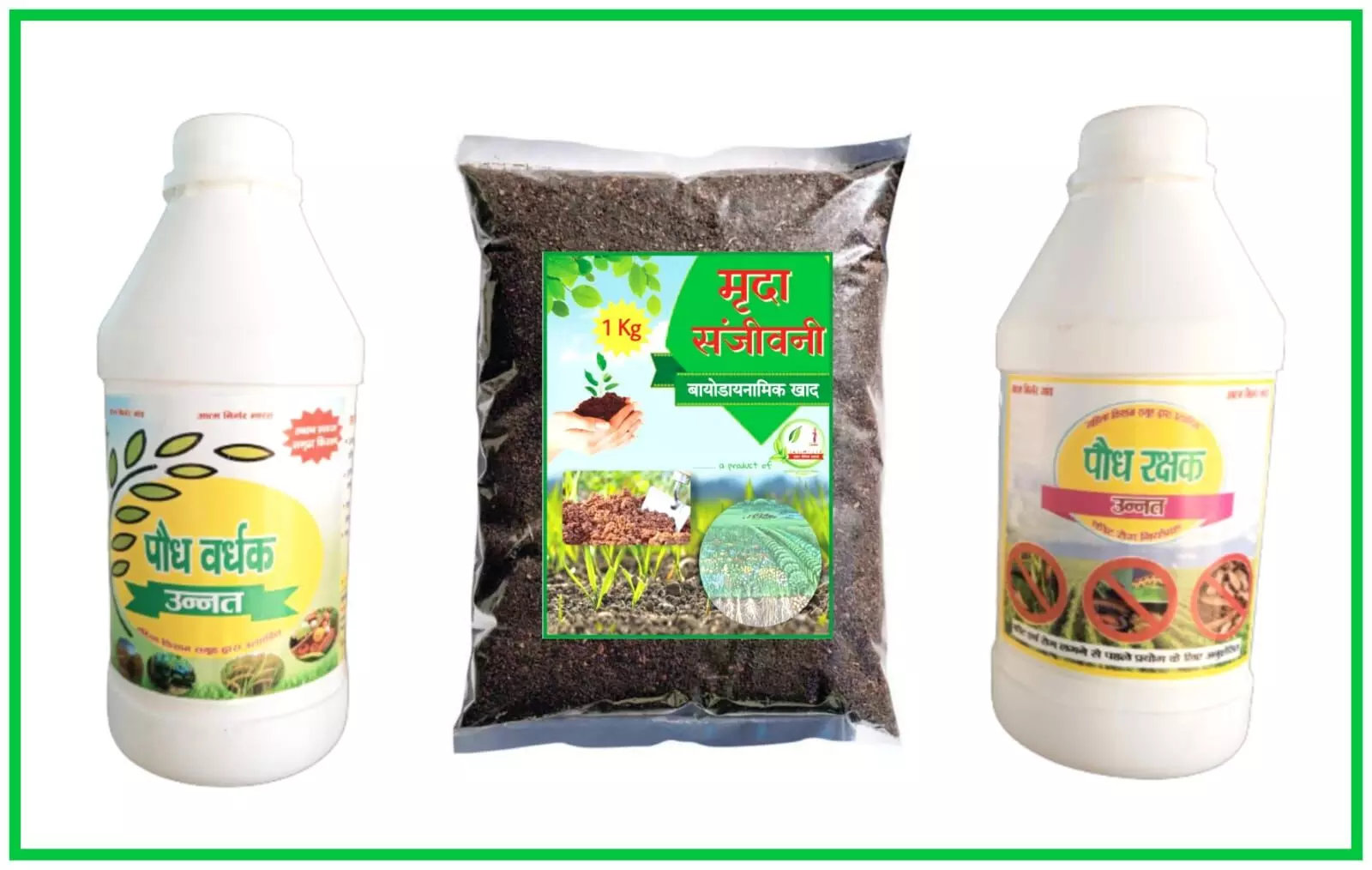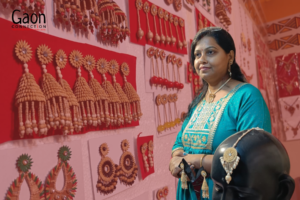Bahraich, Uttar Pradesh
Nibiya Begumpur is like hundreds of other villages in Uttar Pradesh. But something has happened in the past one year that has set it apart.
The village, located about 100 kilometres from the state capital Lucknow, has a centre where rural women manufacture, package and sell biofertilisers, biopesticides and bioinsecticides. The raw materials for making them — cow dung, neem leaves and other herbs — are locally available.
The biofertiliser is known as Mrida Sanjeevani, biopesticide is called Paudh Rakshak, while the bioinsecticide is called GGOC Paste (ginger, garlic, onion and chilli paste).
Unnati Jaivik Ikai, a self-help group (SHG) of 22 women, is behind this new enterprise, which has set up two such centres — known as Bio-Input Resource Centre (BRC) — in Bahraich district.
Apart from Nibiya Begumpur, which is in Risia block of Bahraich, the second BRC is located 18 kilometres away in Bichhala village in Chittaura block.
“The biofertiliser called Mrida Sanjeevani is being sold to farmers locally. It is just the beginning and each of the 22 women members has been able to earn almost Rs 1,500 per month. Our earnings will increase in the future,” Ram Pyari, a 42-year-old SHG member from Nibiya Begumpur, told Gaon Connection.

For the farmers of Nibiya Begumpur and Bichhala villages, using products made by the women of Unnati Jaivik Ikai has been a positive experience.
In April 2022, Ram Pyari was the first woman from her village to go on a field visit to Abhinav AHRDO, an organic farming consulting firm in Indore, Madhya Pradesh, that has worked with more than 100,000 farmers in over 500 villages.
She was invited there to see for herself how biofertilisers were made from cow dung. She returned to her village to share her learnings with the other women.
Ravi Kelkar and Ajit Kelkar, the two founders of Abhinav AHRDO also visited the villages to help the women and provide them with technical inputs while they ventured into their new enterprise.
The women learnt the process of making biofertilisers and biopesticides from cow dung, and for the past one year, they have been supplying their products to local farmers who are finding good use for it.
The Begumpur BRC is supplying its products to 3,000 farmers directly. Another 3,000 farmers of the district get these organic products from the second BRC unit in Bichhala.
Narendra Kumar of Nibiya Begumpur village was the first farmer to use their products and 50 other farmers in the area followed suit. According to him, he now has a yield of five quintals of rice from his two acres as against the two to two-and-a-half quintals the land yielded before the use of the biofertilisers.
In about 15 months, the two units have together sold biofertilisers, biopesticides and bioinsecticides worth Rs 3,30,000 to farmers.
The raw material is right at home
Explaining the process of making biofertiliser Mrida Sanjeevani, Suman Devi, one of the members of the SHG from Bichhala village, said all that they required were cows and their dung.
Buffalo dung is ruled out for making fertilisers because it is not as fertile for the soil as cow dung.

The farmers buy the biofertiliser at Rs 99 per kilogram. However, the women offer discounts to all those who bring their own containers to carry back the fertilisers, which reduces the use of plastics (containers).
“Each woman of the group has a small rectangular pit just next to her house in which about 60 kilograms of cow dung can be collected. The dung is stirred along with 200 grams of eggshells or lime, 200 grams of sand and two sets of biodynamic preparation,” Devi told Gaon Connection.
Biodynamic preparations are organic products that are added to the soil to enhance its fertility.
The mixture is then allowed to decompose for three months and it is then dried. The dried mixture is ready to be added into the soil in an agricultural field.
“From approximately 60 kilograms of cow dung, 25 kilograms of khaad (manure) is produced,” Devi said.
Biopesticide Paudh Rakshak
The women also make biopesticide — Paudh Rakshak — which is sold to farmers at Rs 99 per litre. The biopesticide is of two types, seed extract and leaf extract.
The Seed extract biopesticide is made by grinding and mixing three kilograms of neem seeds, two kilos of karanj seeds, and two kilos of mahua seeds
This powdery mixture of seeds is then soaked in five litres of gaumutra (cow urine) and 2o litres of water.
“The mixture is stirred twice daily for the next 20 to 25 days. After that strain the mixture and store it. It can be stored for six months,” explained a spokesperson from Aga Khan Foundation, which reached out to the SHG and provided financial support worth Rs 14,00,000 for the two BRC units to be set up.
A packet of 500 millilitres of biopesticide can be used after mixing it with 16 litres of water. Then, the Paudh Rakshak solution can be used to spray on an acre of crop. It is used against thrips, suckers, red spiders, caterpillars and fungal diseases.
Meanwhile, the leaf extract biopesticide is made by using leaves of neem, karanj, datura, madaar, nirguni, ratan jot, and besharam.
The leaves are soaked in gaumutra and mixed with 500 grams of mahua fruit and 12 litres of water.
Bioinsecticide GGOC Paste
The bioinsecticide is called GGOC paste and is made with ginger, garlic, onion, and chillies.
The women mix a paste of a kilo of green chillies or half a kilo of red chillies, 500 grams of ginger, 500 grams of onion and 500 grams of garlic and add about eight litres of water into it. The mixture is then soaked in warm water for 12 hours before straining it. The fluid thus produced can be used to get rid of insects on an acre of land. It can be stored for three months but after that it loses its efficacy.
Another product called compound pest and disease controller can be made by mixing leaf extract, seed extract and GGOC paste in a ratio of 4:2:2, explained the Aga Khan Foundation spokesperson.

The biofertiliser is known as Mrida Sanjeevani, biopesticide is called Paudh Rakshak, while the bioinsecticide is called GGOC Paste (ginger, garlic, onion and chilli paste).
A litre of this liquid can be used on an acre of land to protect the crop from pests, diseases and insects.
Income to rural women, better yields for farmers
For the farmers of Nibiya Begumpur and Bichhala villages, using products made by the women of Unnati Jaivik Ikai has been a positive experience. It saves them the time required to make the mixture themselves, or procure it from distances.
“There are less pests and the soil quality is improving,” Azhar Husain, president of the Unnat Sechai Solar Vikas Samiti, told Gaon Connection. Hussain leads a group of 70 farmers with small land holdings (less than 1 acre) who have come together to practise solar powered irrigation in Bahraich.
The farmers buy the biofertiliser at Rs 99 per kilogram. However, the women offer discounts to all those who bring their own containers to carry back the fertilisers, which reduces the use of plastics (containers). To such farmers, the women sell the biofertiliser at Rs 60 per kilogram.
The enterprise in her village has been a boon for Munnaka Devi. The 55-year-old lost her husband 10 years ago and a few years later her only son died too. She had to beg in order to feed her 28-year-old daughter-in-law Sughri Devi, and her two grandchildren.
“With support of the SHG and the village they are able to collect the required quantity of cow dung. As SHG members both Munakka Devi and her daughter-in-law learnt to make the biofertilisers. They are now earning some money and are respected too,” said Ram Pyari, the leader of the self-help group.
There are other benefits of these two centres. When the organic matter is used to produce the biopesticides, biofertiliser and bioinsecticides, it produces methane which is commonly known as biogas.
Women of the SHG are using the biogas for cooking. The bio-gas is stored in containers which are connected to the decomposition pits through pipes. These pipes transfer the gas which is used to cook food (instead of firewood or cow dung cakes). This not only reduces indoor air pollution but also contributes to sustainable energy practices.
There are 10 houses in Nibiya Begumpur village that have also set up biogas units for cooking. It is a smokeless, no cost cooking facility. All that is required is some additional land to construct the bio gas unit.
“If we can make biofertilisers, we can easily manage the biogas unit too,” Ram Pyari said.

















